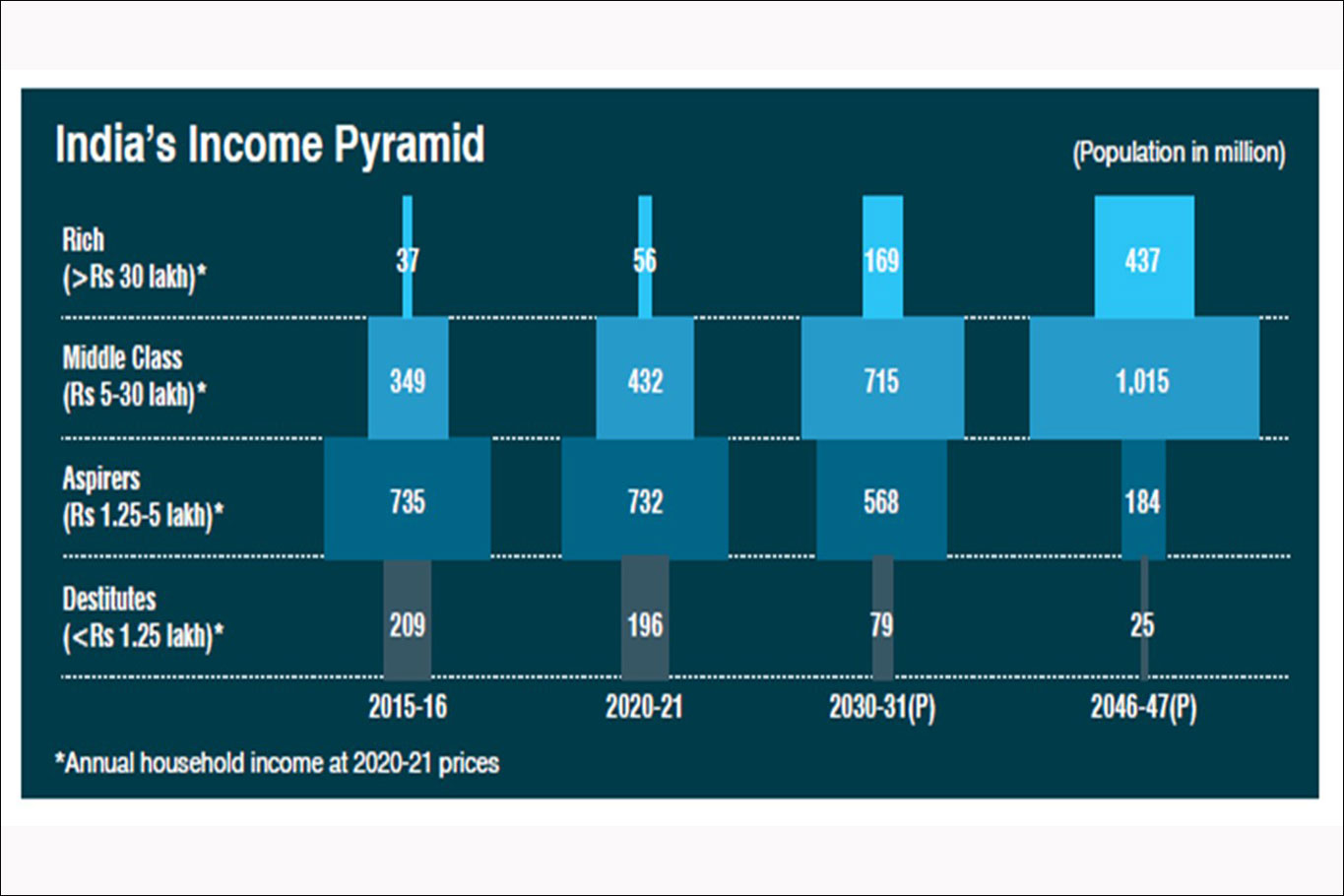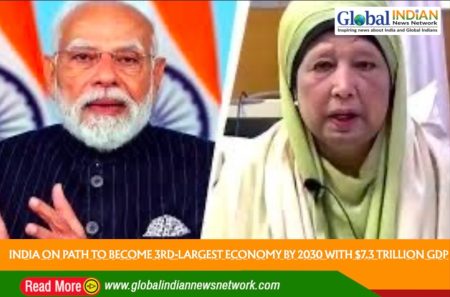 India’s middle-class population is projected to nearly double to 61% of the total population by 2047, compared to 31% in 2020-21. This growth is expected due to political stability, economic reforms, and a sustained annual growth rate of 6% to 7% over the next 25 years, positioning India as one of the world’s largest markets. The findings come from a report released by People Research on India’s Consumer Economy (PRICE) and India’s Citizen Environment.
India’s middle-class population is projected to nearly double to 61% of the total population by 2047, compared to 31% in 2020-21. This growth is expected due to political stability, economic reforms, and a sustained annual growth rate of 6% to 7% over the next 25 years, positioning India as one of the world’s largest markets. The findings come from a report released by People Research on India’s Consumer Economy (PRICE) and India’s Citizen Environment.
The report states that the middle class in India will increase from 432 million individuals in 2020-21 to 715 million (or 47% of the population) by 2030-31, and eventually reach 1.02 billion out of the projected population of 1.66 billion by 2047.
According to the think tank, individuals earning between US$1,322.77 (Rs. 1.09 lakh) and US$7,839.51 (Rs. 6.46 lakh) per year in 2020-21 pricing, or US$6,067.74 (Rs. 5 lakh) to US$36,406.41 (Rs. 30 lakh) per year in household terms, are considered part of the middle class.
Former NITI Aayog CEO Amitabh Kant highlights that with the growing proportion of middle-class households, there will be an increased demand for quality consumer products, housing, education, and healthcare. The government will need to prioritize job creation, education, and healthcare opportunities. The growth of the middle class will play a significant role in India’s journey to become a fully developed country by 2047.
The report also predicts a shift in India’s demographic structure, with a substantial portion of the low-income class transitioning to the middle class by the end of this decade. Additionally, India is expected to see a fivefold increase in the number of super-rich households, particularly in rural areas, with the number of households earning more than US$2,42,709.40 (Rs. 2 crore) annually rising from 1.06 million in 2016 to 1.8 million in 2021.
The western region of India has the highest number of super-rich households, with Maharashtra leading the way (648,000 super-rich households), followed by Delhi, Gujarat, Tamil Nadu, and Punjab. Maharashtra and Delhi account for nearly half of India’s super-rich population. In terms of expenditure, middle-class households spend eight times more than poor households, while rich households spend approximately 25 times more than poor households.












